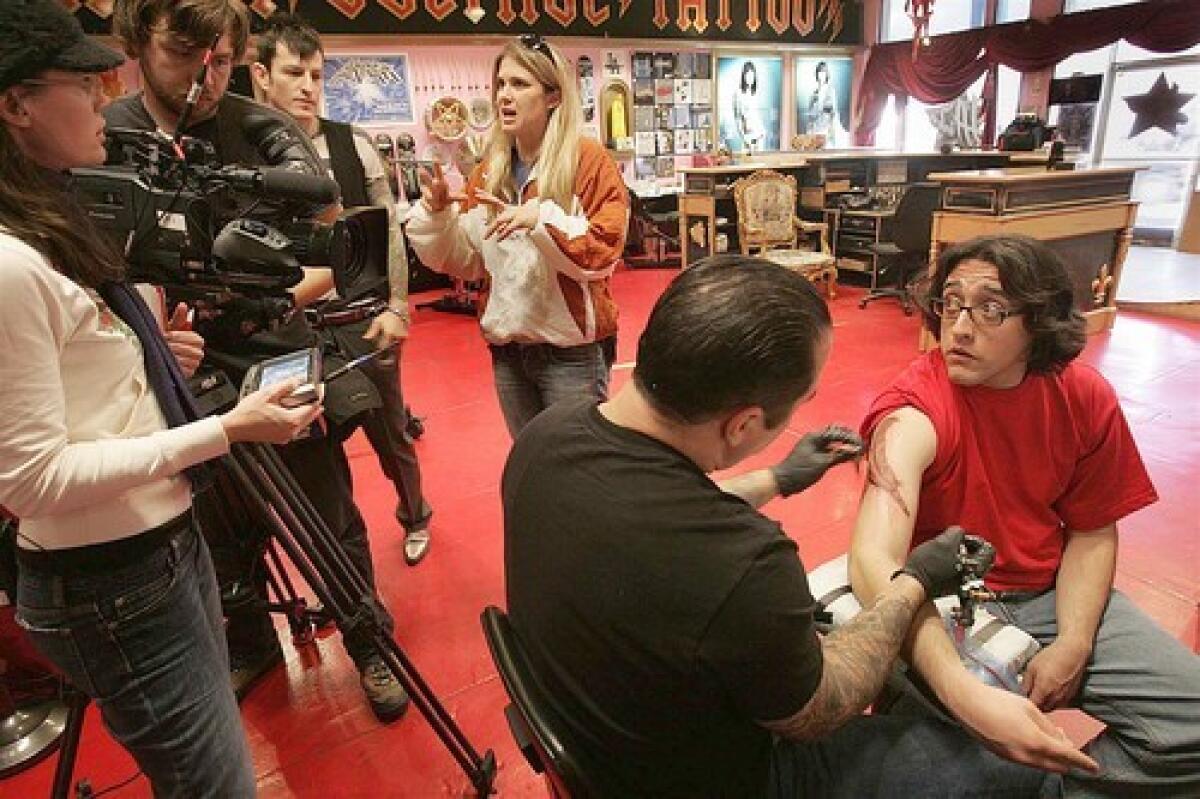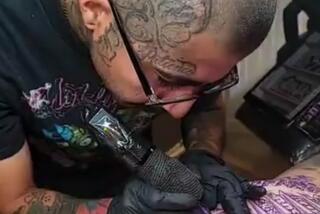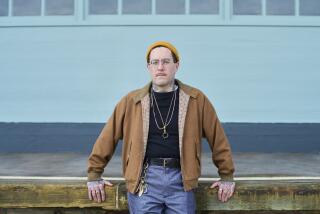A diabetic turns to the tattoo as medical I.D.

- Share via
THE TATTOO machine’s loud buzzing would shock the hairs on my upper arm in different directions if they hadn’t just been shaved off to create a smooth surface.
A little doubt settles in my gut -- something permanent is about to be drawn on my body -- but there’s no sneaking out now. Besides, the tattoo needle is supposed to help me come to terms with the type I normally use.
As the 10-year anniversary of my diagnosis of Type 1 diabetes approached earlier this year, I realized I still hadn’t accepted the fact I was a diabetic. Sure, I’d dealt with the physical aspects -- monitoring my blood glucose levels and giving myself multiple daily insulin shots, eating healthfully, exercising regularly -- but I was still keeping the illness private. I still felt abnormal.
That’s not uncommon for people diagnosed, as I was, during childhood. I was 12,and at that age most kids are simply trying to fit in.
Making it through the day is hard enough without having to alter typical adolescent activities -- such as eating a lot of sugar -- but the hardest part is getting used to stabbing yourself with a needle. That’s when you realize how truly different you are from your peers.
Some kids pretend they don’t have diabetes, giving in to the temptation of sugar and refusing to exercise regularly or monitor their glucose levels. Some go to the other extreme, constantly checking glucose levels, exercising every day and openly discussing their disease.
I fell somewhere in the middle. I was obsessive when it came to checking glucose levels, and I stayed active in sports like baseball and basketball, but I was unwilling to discuss my illness.
My family tried to force the issue. In restaurants, for example, they would tell servers I was diabetic to make sure my drink was a diet soda. My grandparents Gloria and Augie, noticing that I wouldn’t display the normal MedicAlert bracelet made of nickel, bought me a 14-karat necklace (I haven’t taken it off in years).
My mom, Velia, appealed to my obsession with sports by showing me athletes living with diabetes. Then, when I was 16, she put the idea of a tattoo in my head.
I could have chosen countless ways to announce to the world who I am, but there was nothing more permanent than a tattoo.
I conceived of various designs over the years, incorporating a syringe into each idea. Finally, I decided on a quill sticking out of a syringe, with an old-fashioned pen replacing the needle. No one can be defined by just two things, of course, but I am both a writer and a diabetic.
Two weeks after the tattoo healed, I was in line at the post office when the pen tip crept out from a short-sleeved shirt. A woman standing in line with no visible artwork of her own asked to see the rest of the tattoo.
After she took a picture with her camera phone and commented about the detail in the feather, she asked about the tattoo’s significance.
For the first time in 10 years, my head didn’t slump between my shoulders.
Joshua Sandoval, a former staff writer for the Los Angeles Times, can be reached at joshua.sandoval@cox.net.






